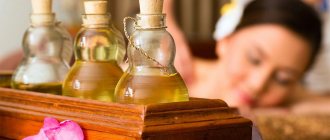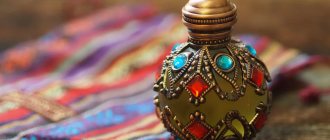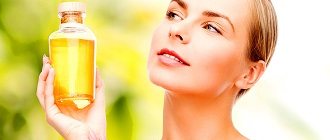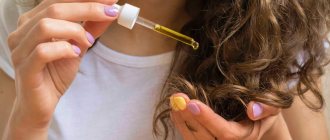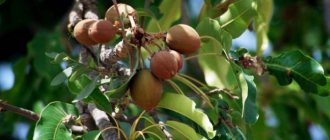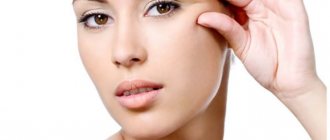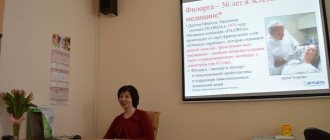Essential oils are oil-like volatile substances that tend to evaporate. They do not have the properties of basic vegetable oils; there is no fat in their composition.
Modern cosmetology knows more than 1500 types of esters. Essential oils are used in cosmetology: for the face, body and hair, for rejuvenation, for acne, unevenness and defects of the skin. In medicine – for a runny nose, headaches, and in the treatment of certain ailments. Aromatherapy has both cosmetic and therapeutic effects.
But, you need to use essential oils for the face, body, hair and, especially, for medicinal purposes wisely, following certain rules.
The main advantages of facial oils
Plant oils are the best cosmetic helper for the skin.
They are close in composition to human lipids. When applied to the skin, they “merge” with it, strengthening its protective barrier and preventing fluid loss.
In addition, these natural elixirs enrich the skin with a mass of substances necessary for its beauty, youth and health.
Natural oils can replace half of your cosmetics bag. Their functionality is so wide.
They can:
- Cleanse.
Vegetable oils are good cleansers. The secret is that fat dissolves in fat, and most of the dirt on the face (cosmetics, sebum) are fat-soluble substances. Therefore, oils can cleanse any type of skin, including oily skin.These natural helpers are able to dissolve and remove even stubborn mascara that ordinary “washes” cannot cope with.
- Moisturize.
The human body is covered with a hydro-lipid mantle, which prevents moisture loss. With age and under the influence of negative factors, this natural film becomes thinner, which leads to dry skin. Plant oils help preserve this valuable water-fat layer. - Protect.
The hydro-lipid mantle is also called the first skin barrier. This is due to the fact that it protects the body from external aggression - primarily from the sun and frost. We preserve and strengthen our own protective barrier with the help of natural oils - we prevent the destructive effects of external factors. - Supply.
Plant oils contain many valuable fatty acids and vitamins. We apply the product - we enrich the skin from the outside with everything it lacks. - Decontaminate.
Many herbal elixirs have a pronounced antibactericidal and anti-inflammatory effect. They “pull out” all the dirt and bacteria from the skin. They are an excellent option for preventing and combating acne. - Restore.
Oils accelerate regeneration, help the body “patch up” scars and acne marks, eliminate redness and peeling. - Rejuvenate.
These natural “wizards” deliver components to the skin, the deficiency of which leads to aging. The most valuable things in their composition are youth vitamins (A, C, E, group B) and unsaturated fatty acids (omega-3, -6, -9).
Individual components fight free radicals, which destroy the “building” proteins of our dermis (collagen and elastin) and provoke premature aging, decreased turgor, and the appearance of wrinkles. In particular, vitamin E has such an antioxidant effect.
For all their benefits, plant oils are convenient and pleasant to use. They:
- absorb well
- they smell delicious (we enhance their effect with aromatherapy),
- used as independent, basic care,
- can be combined with other cosmetics in every possible way (a few drops of oil can be added to a cream or serum),
- can be used as a base for makeup.
Why does the skin become loose?
The causes of sagging body skin may be as follows:
- aging. You will not find a person who will have beautiful skin at 80 years old. Typically, flabbiness occurs closer to the 40th birthday;
- heredity. A person begins to age at the age of 25. This is a natural process. But for some it happens earlier, for others later. It all depends on what is in the genes;
- insufficient muscle tone. If they are sluggish, then the skin of the body will have a flabby appearance. If muscle activity is insufficient, then the blood supply to the skin also suffers;
- childbirth. The skin of the abdomen, which has stretched during pregnancy, should return to its original shape. But this doesn't always happen. Even during pregnancy, there is a sign that indicates the possibility of sagging body skin after childbirth. We're talking about stretch marks;
- weight loss If a woman has lost excess weight, but very abruptly, this can provoke the appearance of “excess fat”;
- stress, internal diseases. All this affects the body, skin, and its condition.
Due to the above-mentioned reasons, blood circulation in the skin worsens, less elastin and collagen are produced. And outwardly it manifests itself as loose skin of the body.
Types of facial oils
Not all oils are created equal.
The modern cosmetics industry produces many products of a combined composition, which, in addition to natural plant components, also contain mineral oils and all sorts of chemical additives (surfactants, emulsifiers, preservatives, etc.).
What are mineral oils
? These are petroleum products. A mixture of liquid hydrocarbons that have been separated from gasoline. They are used in industry for lubrication and as a solvent liquid. For use in cosmetics, they undergo special purification, but still remain carcinogenic.
Mineral oils
create a film on the surface of the skin that “locks” moisture inside. And at first it seems that this softens the covers. But at this time, processes that are not beneficial for the skin occur under the film.
Under it, not only water is retained, but also toxins, carbon dioxide, and waste products that must be removed outside. The film prevents sebum and sweat from freely coming to the surface. Prevents the normal exfoliation of keratinized cells, which will stick together and clog the ducts of the sebaceous glands.
Also, mineral oil slows down the growth and development of cells, dissolves the body’s own sebum and increases dehydration.
Plant oils are a completely different matter.
. They work differently. They do not interfere with the skin’s ability to breathe (saturate with oxygen and excrete everything unnecessary), do not provoke clogging of pores with sebum and “dead” cells, and do not harm the body’s own sebum regulation.
Vegetable oils are friendly to our skin and do not cause harm. We advise you to choose them.
But it is necessary to understand the difference between the two main types of vegetable oils - base
and
ethereal
. The specific use of the product depends on this.
Correction methods
Sagging body skin - what to do? Of course, you need to correct such a defect in order to give your skin a beautiful elastic state. To do this, cosmetologists can offer you several options for procedures:
- LPG massage. If you undergo a course of such procedures, you will get rid of 20% of the skin area;
- RF lifting. With its help you can tighten your muscles and skin. And you can see the result after just a few sessions;
- biocybernetic therapy. Here there is an impact on various processes that can provoke sagging skin of the body. That is, the procedure helps improve microcirculation, tone muscles, and skin regeneration;
- mesotherapy. Here, special preparations are injected under the skin that restore water balance, saturate the skin with microelements, vitamins, and improve skin turgor;
- Laser, injection biorevitalization. With its help you can make your skin less dry and replenish the lack of moisture;
- wraps help moisturize the skin and improve turgor. In addition, this procedure has a detoxifying effect;
- hydromassage. During this procedure, professional equipment is used, so the effect is on the subcutaneous fatty tissue and the skin itself;
- thread lifting with 3D mesothreads. You can remove areas of sagging with this procedure, and it can be applied to any problem area. In addition, this method will help get rid of unevenness that appeared as a result of liposuction or plastic surgery;
- ultrasonic cleaning. The specialist uses ultrasound, which will help not only remove dead skin cells, remove sagging body skin after 30, but also make it smooth, firm and elastic.
The most important things about base oils
Base oils are obtained from parts of plants that are rich in fat. These are bones, nuts, seeds.
Such products are especially valued for their high content of fatty acids and vitamins.
The main thing that distinguishes such a product is polyunsaturated fatty acids
, those same famous “omegas”. There are many of them, but for the health and beauty of the skin you need only three families: -3, -6, -9. And if our body is able to synthesize the ninth on its own, then the third and sixth enter it only from the outside, with food and cosmetics.
Absolutely any skin type needs polyunsaturated acids, even oily ones.
If applied to the face, they do not create a “greenhouse” effect and will not interfere with “skin respiration”. At the same time, omega fats do a lot of useful things:
- contribute to the restoration of the lipid barrier,
- strengthen cell membranes and prevent their oxidation - protect against UV rays and inhibit aging,
- help strengthen collagen fibers – prevent the appearance of wrinkles and premature aging of the skin,
- moisturize by integrating into the lipid layer and preventing moisture loss,
- promote regeneration and healing of rashes, have anti-inflammatory and antibacterial effects,
- increase the elasticity and strength of blood vessels, reduce dark circles under the eyes and spider veins.
The most important base oils for skin are extracted from coconut, argan, camellia, shea butter, jojoba, olives, avocado, almonds, apricot kernels, walnuts, flax, hemp, etc.
The range of uses of essential oils in modern medicine using the example of Golden Star balm
The necessary therapeutic effect of a drug and its bioavailability are ensured not only by the pharmacological action of the drug, but also by the dosage form (DF) chosen for their creation and use [1]. Official herbal preparations, which have significantly fewer side effects, can be considered as an alternative therapy or used to enhance the effectiveness of prescription drugs. Medicines (medicines) obtained on the basis of medicinal plant raw materials (MPS) are usually called “medicines of plant origin” (MSRP). A fairly common class of drugs obtained on the basis of MP are oils—essential oils (EOs) and vegetable fatty oils. Oils are most often used as a starting or intermediate product for the production of LSRP and are characterized as pharmaceutical substances or pharmaceutical excipients [1].
Separate requirements for the quality of specific names of packaged medicinal products are specified in private pharmacopoeial monographs (FS) for medicinal products included in the State Pharmacopoeia of the USSR X ed. (GF X) [2], State Pharmacopoeia of the USSR XI ed. (GF XI) [3], in the regulatory documentation of manufacturers. LSRP are included in the Register as “drugs of herbal origin” indicating the pharmacological action: “choleretic of herbal origin”, “sedative of herbal origin”, etc. LSRP are available in more than 50 pharmacological groups of the Register, including: expectorants, general tonics , antispasmodic, sedative, laxative, choleretic, diuretic, astringent, etc. The drugs presented in these groups are registered in the form of various dosage forms. In the domestic pharmacopoeia, the characteristics of essential oils are given in article 471 of the State Fund X “Essential oils” (Olea aetherea): “Essential oils are a mixture of volatile fragrant substances belonging to various classes of organic compounds. The main components of essential oils are terpenes and their oxygen-containing derivatives, and less commonly, aromatic and aliphatic compounds. EOs are obtained from various plant organs by distillation with water or steam, extraction with organic solvents, pressing and other methods” [1]. The European Pharmacopoeia (EP) has a general monograph 01/2008:2098 “Essential oils. Aetherolea”; The monograph of the British Pharmacopoeia is identical to the EP. According to this monograph: “Essential oils are odorous drugs, usually of complex composition, obtained from medicinal plants by steam distillation, dry distillation, or suitable mechanical effects without heating” [4]. GF X included three private pharmacopoeial articles for essential oils: eucalyptus, peppermint, purified turpentine oil (turpentine).
The study of biological activity and the possibility of using essential oils for medicinal purposes was widely carried out in the laboratory of the Crimean Research Institute named after. I. M. Sechenov. In the course of research, it was found that essential oils and their components easily pass through the epithelium of the capillaries, they freely cross the placenta. With the help of transport carrier molecules located in biological membranes, molecules of aromatic substances penetrate cell membranes and interact with receptors of intracellular biological complexes. They interact with the enzyme, endocrine, immune and other systems [5]. Complex mixtures of fragrant substances (essential oils) are most often classified as monoterpenes and sesquiterpenes based on their chemical structure, but they can also be phenolic compounds. By their physical nature, they are mobile oily liquids that evaporate without leaving greasy stains and mix well with alcohols and fatty oils. They do not mix with water, but are capable of distillation with water vapor [6]. The global assortment of major essential oil plants includes about 30–40 species, the most important among them are species of genera that include not only monocyclic monoterpenes, but also their precursors, acyclic monoterpenes: geraniol, linalool, citronellol, etc. [7]. In modern medical practice, medicines based on EOs are used in the treatment of functional disorders of the gastrointestinal tract, inflammatory diseases of the upper respiratory tract, lower urinary tract and as a means of correcting functional disorders of the central nervous system.
In medicine, complex preparations containing essential oils from many medicinal plants are used [9, 10]. Group aromatherapy appears to be a promising method of group therapy and prevention of acute respiratory diseases (ARI) in groups. The term “aromatherapy” (literally, the use of scent as a medicine) was first coined by the French chemist Dr. Rene M. Gattefosse in 1928. [11] Aromatherapy is the inhalation of natural essential oils that have antimicrobial and antiviral properties. Inhaling the vapors of such oils has a bactericidal, anti-inflammatory and antiseptic effect, improves the qualitative composition of the microflora of the upper respiratory tract and their patency, and increases local immunity. We should dwell in more detail on the group of essential oils that are used to treat inflammatory pathologies of the respiratory tract. The significant prevalence of acute respiratory diseases, their adverse effects on the state of the body’s leading systems, and the insufficient effectiveness of prevention and rehabilitation methods determine the importance of the medical aspects of this problem and their social significance [12, 13]. Today, a current trend is the use in medical practice of safe medical technologies that increase the functional reserves of the child’s body in the treatment of respiratory diseases. There is extensive experience in the use of “collective” prevention of respiratory pathology. Thus, in a number of schools and kindergartens, in collaboration with doctors, various methods are used: vaccination, the use of means for elimination therapy [12]. In a number of studies conducted in children's medical institutions, various drugs were prescribed based on a complex of natural essential oils (mint, eucalyptus, cajeput, juniper, clove, wintergreen).
E. Yu. Radzig et al. (2009) [12] conducted an open comparative study to evaluate the effectiveness of the drug (oil for inhalation), which includes a multicomponent composition of essential oils, as a means of preventing colds in organized children's groups. The study was conducted for 90 days at a kindergarten in the North-East Administrative District of Moscow. The main group included children (n = 100) aged 3–7 years who were prescribed the drug EM; In the control group, children (n = 100) had their nasal cavity and nasopharynx washed with saline every day for a month. During inhalation of the drug with EF during the first 20 days, a less pronounced manifestation of symptoms (nasal congestion, mucous discharge from the nose) was observed in comparison with the control group. In the main group of 100 people, 2 children (2%) developed an allergic skin rash after one day of taking the drug and the children dropped out of the study. According to the results of the study, during the observation period of the remaining children (n = 98) it was obtained: 32.6% never got sick; 51% got sick only once; 15.3% got sick twice; 1% - three times. When taking a drug with EOs as a means of preventing the development of respiratory diseases in children in organized children's groups, the number of children who did not get sick increased by 34%; in 98% of cases the drug was well tolerated [12].
In another open comparative study by E. A. Azova et al. (2012) [13] assessed the effectiveness of another drug, which contains natural essential oils (mint, eucalyptus, cajeput, juniper, clove, wintergreen), in the complex therapy of acute respiratory infections. The study was conducted on the basis of a children's clinic in Nizhny Novgorod. We observed 45 children with acute respiratory infections, aged 3–14 years, who had a history of recurrent disease. The main group of children (n = 30) received standard therapy in combination with a preparation based on essential oils, the control group (n = 15) received standard therapy only. In the main group, the drug was prescribed in the form of passive inhalations for 30 days. The dynamics of the condition were assessed by a pediatrician, an ENT doctor, using nasopharyngootoscopy, cytoscopy of a smear from the nasal mucosa, and an allergy test for tolerance to essential oils. In the background: clinical signs of acute respiratory infections with damage to the upper respiratory tract (soreness, dryness and sore throat, rhinorrhea, cough), with pharyngoscopy - signs of an active inflammatory process (hyperemia of the mucous membrane of the pharynx, etc.). Clinically positive dynamics were noted on the 3rd day in the main group, on the 7th day - in the control group; on the 3rd day, an improvement in the rhinoscopic and pharyngoscopic picture was noted in all children (100%) in the main group and in 20% in the control group. No adverse reactions were observed when using the complex of essential oils, including in children with a history of allergies. Based on the results of the study, a conclusion was drawn [13]: the use of a complex of essential oils in addition to standard therapy can reduce the duration of acute respiratory infections by 1.6 times; Can be prescribed to children of different age groups; can be used as a prevention of recurrent respiratory diseases in children both at home and in outpatient settings.
Similar data were obtained in the study by L.P. Grebova et al. (2013) [14], which assessed the effectiveness of a drug containing a similar composition of essential oils on the incidence of acute respiratory viral infection (ARVI) in an organized children's group. The study involved 106 children in the first grades of a school in Ryazan; all schoolchildren were vaccinated according to age. All participants were divided into 4 groups: in group 1, children (n = 27) were prescribed a drug with essential oils only in the classroom; in the 2nd (n = 27) - only at home; in the 3rd (n = 23) - both in the classroom and at home; in the 4th, control group (n = 29) - nothing was prescribed. The drug was used in the form of passive inhalations for 30 days. The study revealed: in children who received the drug with essential oils as a means of preventing ARVI, the following was noted: 1) a decrease in the number of cases of ARVI by 3.1 times; 2) milder course of the disease; 3) reducing by 3 times the number of missed school days due to illness [14].
One of the most popular remedies for the treatment of colds is Golden Star balm. The balm was developed by Vietnamese scientists based on ancient recipes and received approval from the Ministry of Health of the Russian Federation [15]; it can be used in the treatment of a wide range of diseases [16]. Today, the Russian pharmaceutical market sells several forms of the drug: pencil for inhalation, liquid balm, solid balm. As a result of the studies, it was proven that the substances included in the balm do not have a negative effect on human skin. The balm contains essential oils: camphor (Camphora) - 0.910 g, peppermint (Mentha piperita) - 0.590 ml, eucalyptus (Eucalyptus) - 0.140 ml, clove (Syzygium aromaticum) - 0.228 ml, cinnamon (Cinnamomum zeylanicum) - 0.053 ml and menthol oil - 0.455 g. The healing and preventive properties of the Golden Star balm are recognized by official medicine. Pharmacological effect of the balm: distracting, antiseptic, local irritant.
It is worth briefly dwelling on the medicinal properties of the essential oils included in the Golden Star balm. Clove essential oil is light, fluid, with a strong spicy odor and pungent taste. Clove oil is obtained from the flower buds of the evergreen clove tree of the myrtle family. Clove oil has a strong antiseptic, antispasmodic, strengthening, stimulating and carminative effect, so it can be used for preventive purposes during epidemics of airborne and intestinal infections [16]. It is used as an antiseptic, due to its high antibacterial and antiviral activity, in the prevention of influenza and ARVI during epidemics of these airborne infections [11]. Clove oil also has antimycotic activity against Aspergillus fungi [17]. Clove oil is a pain reliever that can be used for neuralgia, arthritis and rheumatism, and it also strengthens the immune system and has a warming effect. The use of clove oil in combination with other remedies has a strong healing effect on inflammation of the skin, infection in wounds and long-term non-healing ulcers. Preparations with clove oil eliminate inflammatory processes in the oral cavity during periodontal disease and pulpitis, as well as dental neuralgia [16].
The medicinal properties of peppermint, a perennial herbaceous plant, have been known since ancient times. The medicinal raw material is mint herb, as well as the essential oil obtained from the leaves, which has pronounced antibacterial properties [18]. Mint leaves contain substances such as carotene, hesperidin, betaine, rhamnose, glucose, ursolic, melicic, linoleic and oleanolic acids [16, 18]. From peppermint leaves, EO is obtained, which is actively used in the treatment of respiratory diseases [19], and menthol, which has a mild analgesic and disinfectant effect. Menthol is used in the form of alcohol, ether-alcohol and oil solutions externally (for rubbing) for itching, neuralgia, migraines, used for lubrication, inhalation and as drops (in the nose) for inflammatory diseases of the upper respiratory tract (runny nose, tracheitis, etc.) . Peppermint oil is used for inhalation for laryngitis, to eliminate muscle pain due to overexertion and injuries [16]. Cinnamon tree or cinnamon is a genus of trees and shrubs from the laurel family, from the fruits and leaves of which cinnamon oil is obtained. Cinnamon oil has antiseptic, analgesic, decongestant, warming and antidepressant effects; accelerates the recovery process for nervous and cold diseases, as well as for some disorders of the gastrointestinal tract [16]. According to recent data [20] in experimental models, cinnamon has an inhibitory effect on cholinesterase activity, and an increase in the number of neurons in the hippocampus has been histologically revealed.
The medicinal raw materials are eucalyptus leaves. Substances contained in eucalyptus have an antiseptic (due to the presence of bioflavonoids) [21] and analgesic effect. Eucalyptus EO is used both externally and internally. It is used for diseases of the upper respiratory tract for inhalation, as well as for lumbago [16]. Eucalyptus preparations are used in the treatment of abscesses, cellulitis, infected wounds, pleurisy, mastitis, chronic osteomyelitis, open fractures, gynecological, colds and many other diseases [21]. In addition to extracts and essential oils of medicinal plants, the balm also contains some other components that have a number of medicinal properties. Camphor is one of the powerful medicinal agents and is included in many preparations intended for both external and internal use [16]. Linalool, which is part of camphor, has pronounced insecticidal and repellent effects [22]. Camphor is a powerful stimulant of heart activity and is used in the treatment of acute and chronic heart failure, as well as to restore blood circulation and breathing during collapse. It is used externally for joint diseases (rheumatism, arthritis, arthrosis, radiculitis), as well as for bedsores in severely ill patients.
Thanks to eucalyptus oil, Golden Star balm stimulates sensitive nerve endings and is indispensable for headaches and colds; peppermint oil has sedative analgesic, antiseptic, antispasmodic and other effects; clove oil has a pronounced anesthetic effect; menthol oil suppresses the development of edema in inflammatory diseases of the upper respiratory tract; cinnamon oil is used as a remedy after bruises and for arthralgia; camphor oil has a warming effect (for myositis, etc.) [9–11, 16]. Balm Golden Star is used externally for colds, runny nose, cough, flu, inflammation and pain in the nasopharynx. It eliminates nasal discomfort and is recommended for headaches and dizziness, as well as for symptoms of seasickness. Thanks to the medicinal plant essential oils it contains, the balm has a strong aromatherapy effect, so it can be used in combination with other remedies in the treatment of psychosomatic conditions. Balm Golden Star can also be used in the treatment of various joint diseases (arthritis and arthrosis), radiculitis, rheumatism, osteochondrosis, as well as minor injuries (bruises and sprains). The drug can also be used for insect bites to relieve skin itching. Contraindications for the use of Golden Star balms are intolerance to the components included in the balm and pustular skin diseases.
Conclusion
This review describes the effects of the most famous natural essential oils (peppermint, eucalyptus, cloves, cinnamon), on the basis of which various medicines have been created. Data from a number of studies using medications containing essential oils are presented, which indicate that the use of a complex of essential oils in addition to standard therapy can reduce the duration and severity of acute viral respiratory diseases.
One of the most famous and popular means for the prevention and treatment of colds during an unfavorable epidemiological situation is still the Golden Star balm.
Literature
- Sakaeva I.V., Bunyatyan N.D., Sakanyan E.I. et al. Medicines of herbal origin in modern dosage forms: characteristics and classification // Bulletin of the Scientific Center for Expertise of Medicinal Products. 2013; 4:51–58.
- State Pharmacopoeia of the USSR: X edition. Collection of mandatory national standards and regulations regulating the quality of medicines, ed. Mashkovsky M. D. M.: Medicine. 1968. 1078 p.
- State Pharmacopoeia of the USSR: Vol. 1. General methods of analysis / USSR Ministry of Health. 11th ed., add. M.: Medicine, 1987. 336 p.
- State Pharmacopoeia of the USSR: Vol. 2. General methods of analysis. Medicinal plant raw materials / Ministry of Health of the USSR. 11th ed., add. M.: Medicine, 1989. 400 p.
- European Pharmacopoeia 7.0. Volume 1. M.: Remedium, 2011. 1812 p.
- Tikhomirov A. A., Yarosh A. M. Features of the use of essential oils for therapeutic and prophylactic purposes. Chasopis // Phytotherapy. 2008; 1:18–21.
- Rozhdestvensky D. A. Clinical pharmacology of medicines based on essential oils // Medical news. 2015; 10: 16–18.
- Ponomareva E.I., Molokhova E.I., Kholov A.K. Application of essential oils in pharmacy // Modern problems of science and education. 2015; 4:567–575.
- Pavlov S. A. Balm “Star”. In the book: Ancient and modern methods of treatment. St. Petersburg: Lenizdat, 2006. 128 p.
- Pavlov S. A. Balm “Star”. In the book: Ancient and modern methods of treatment. St. Petersburg: Lenizdat, 2011.
- Zaitseva S.V., Zastrozhina A.K., Belskaya E.A. The place of aromatherapy in the treatment and prevention of acute respiratory diseases // Difficult Patient. 2015: 1–2 (13): 48–54.
- Radtsig E. Yu., Bogomilsky M. R., Ermilova N. V. Inhalation with essential oils - a method for the prevention of respiratory viral infections in organized children's groups // Treating Doctor. 2009; 9:92–94.
- Azova E. A., Vorobyova V. A., Kulikov A. G. et al. Experience of inhalation use of “Breathe” oil in the prevention and complex therapy of acute respiratory infections in children // Pediatrician’s Handbook. 2012; 3:55–61.
- Grebova L.P., Besarab G.A., Lobanova E.I. Prevention and complex therapy of ARVI: the effectiveness of inhalation effects of natural essential oils // Respiratory diseases. 2013; 1:60–63.
- Instructions for use of the medicinal product for medical use. Balm “Golden Star”. Register. number: P N011814/01–070911.
- Antonova L.V. “Star”. Unknown healing properties of an old friend. M.: RIPOL classic, 2007. 64 p.
- Císarová M., Tansinová D., Medo J. et al. The in vitro effect of selected essential oils on the growth and mycotoxin production of Aspergillus species // J Environ Sci Health B. 2016, Jun 20: 1–7.
- Radaelli M., da Silva B.P., Weidlich L. et al. Antimicrobial activities of six essential oils commonly used as condiments in Brazil against Clostridium perfringens. // Braz J Microbiol. 2016 Apr-Jun; 47(2):424–430. DOI: 10.1016/j.bjm.2015.10.001.
- Ayrle H., Mevissen M., Kaske M. et al. Medicinal plants — prophylactic and therapeutic options for gastrointestinal and respiratory diseases in calves and piglets? A systematic review // BMC Vet Res. 2016, Jun 6; 12 (1): 89. DOI: 10.1186/s12917–016–0714–8.
- Madhavadas S., Subramanian S. Cognition enhancing effect of the aqueous extract of Cinnamomum zeylanicum on non-transgenic Alzheimer's disease rat model: Biochemical, histological, and behavioral studies // Nutr Neurosci. 2016, Jun 16: 1–12.
- Goodger JQD, Senaratne SL, Nicolle D. et al. Foliar Essential Oil Glands of Eucalyptus Subgenus Eucalyptus (Myrtaceae) Are a Rich Source of Flavonoids and Related Non-Volatile Constituents // PLoS ONE. 2016; 11 (3): e0151432. DOI: 10.1371/journal.pone.0151432.
- Jiang H., Wang J., Song L. et al. GC×GC-TOFMS Analysis of Essential Oils Composition from Leaves, Twigs and Seeds of Cinnamomum camphora L. Presl and Their Insecticidal and Repellent Activities // Molecules. 2016, Mar 28; 21(4). DOI: 10.3390/molecules21040423.
O. A. Shavlovskaya, Doctor of Medical Sciences
GBOU VPO First Moscow State Medical University named after. I. M. Sechenova Ministry of Health of the Russian Federation, Moscow
Contact Information
What you need to know about essential oils
Essential oils are volatile liquids with a characteristic strong odor and a high concentration of biologically active substances.
They are extracted from plants by distillation, pressing (cold pressed), enfleurage (plants are placed on thickly greased sheets, which release their essential oils to the fat layer), extraction with solvents or carbon dioxide.
Raw materials - leaves, petals, pistils, seeds, seeds.
Modern cosmetology knows more than 2000 essential oils. Derivatives of lemon, orange, lavender, rose, tea tree, geranium, bergamot, jasmine, ylang-ylang, mint, rosemary, chamomile, patchouli, ginger, lemon balm, neroli, mimosa, fir, incense, juniper work best on the skin.
Such products are considered a natural concentrate due to their saturation with biologically active substances. They contain antioxidants, disinfecting components, polyphenols, etc. and penetrate deeply into tissues.
Their composition is so active that it is strictly forbidden to apply them to the skin in their pure form, as they can cause irritation, an allergic reaction and even a burn.
Essential oils can only be added to your skincare product a few drops at a time.
Be careful! Do not combine essential oils with cosmetics that contain chemical components, because it is not known how they will interact with each other. It is best to combine essential oil with a base oil or add it to homemade masks made from natural ingredients.
Oil mixtures for problem skin
Using aromatic oils for acne and acne in the form of masks, you can effectively combat skin problems. The best results are observed when using several oils at the same time.
Always apply oils and masks following the massage lines
Effective antibacterial agent
You will need the following aromatic oils:
- tea tree - 2 drops;
- lavender - 2 drops;
- lemon - 2 drops.
Add them to 1 tbsp. l. bases and mix. The mixture has antimicrobial and astringent effects, helps cleanse and gently whiten the skin. It must be applied every day before bed and left until the morning.
Coniferous composition against acne
To prepare the mixture, take the following ethers:
- cedar - 3 drops;
- Siberian pine - 2 drops;
- geranium - 1 drop.
Add them to 1 tbsp. l. grape seed oils. Wipe problem areas with the resulting mixture up to three times a day.
Blend to tighten pores and fight inflammation
Mix a tablespoon of base with aromatic oils:
- lemon balm - 3 drops;
- rosemary - 2 drops;
- grapefruit - 1 drop.
The mixture eliminates rashes, cleanses the skin and tightens pores. Application up to five times during the day is allowed.
Rosemary oil reduces the secretion of sebaceous glands and also tightens enlarged pores. Regular use will help prevent the appearance of comedones.
Mask with lavender oil for acne and post-acne - video
https://youtube.com/watch?v=6A0CiOsjMvk
How to apply correctly
- If the oil has a hard consistency, warm it in your palms for a couple of seconds.
- You may forget the basic rules of applying cosmetics, which require avoiding the area around the eyes. We apply natural oils to the ENTIRE FACE, including the periorbital area, lips, eyebrows, eyelashes. At the same time we treat the neck and décolleté.
- We pay special attention to technology. Applying the product to the face along massage lines, using light stroking movements, is the most commonplace option. The product can be made to work more actively. How? It all depends on the tasks.
How to use facial oil most effectively?
- For cleansing.
Dip a cotton pad into the oil and wipe your face with it. - For the prevention of acne.
Apply oil to your face. Soak a small towel in hot water, wring it out and cover your face with it, taking a lying position. In 5-10 such “warm” minutes, the natural elixir will draw out all the dirt and excess sebum that clog the pores. Coconut oil is good for these purposes. - For the prevention of age-related changes and rejuvenation.
You can enhance the effect of the oil using a special application technique. Rub the product in with firm massage movements for 2-3 minutes and you will help it penetrate deeper into the skin.
Watch Annette do it and repeat:
- The main direction of movement: from the center of the face to the periphery.
- We move quickly and intensely.
- We rub our face with our palms and fists, using linear and circular movements.
- We pay special attention to working on the area of the chin and lower jaw.
- We include an ear and neck massage in the procedure.
Applying the product with dense massage movements gives a good result. This helps the product work more effectively, as blood circulation is activated and the skin warms up.
But this technique is not part of the anti-aging exercise routine that MelAnnett has developed for its beauty marathons. Proper self-massage is done on dry skin - for closer contact with the hands and a deeper effect (not only the skin, but also the myofascial level is affected).
For the most effective facial exercises and the best self-massage techniques, go to the basic marathon “SmeloNET” from MelAnnett. Here they create a youthful face, perfect posture and a toned figure in 3 weeks. Only natural rejuvenation, and no harm to the body.
Useful tips
1. Use only high-quality esters, checking the expiration date. 2. Observe the recommended doses, following the instructions. 3. Do not mix more than seven oils at the same time. The best option is two or three types. 4. Use carefully and sparingly, because this product contains the life of the plant. 5. It is advisable to buy esters from reputable manufacturers to avoid synthetic duplicates.
Regular use of essential oils on the face will not only relieve age-related signs of aging and skin problems, but will also increase vitality and improve mood.
What are the contraindications?
The limitation for the use of massage techniques when applying oil are local problems:
- acne in the stage of suppuration,
- rosacea (pink rashes that form due to chronically dilated capillaries),
- damage to the skin: wounds, burns,
- viral diseases: herpes, eczema, etc.
- vascular problems: rosacea, increased fragility of blood vessels, etc.
It is also worth considering the general state of health and refrain from self-massage at high temperatures, severe hypertension, active inflammatory processes, blood diseases, exacerbation of chronic diseases, etc.
Recipes for effective acne masks
Oatmeal and clay perfectly complement the effect of aromatic oils in masks.
Therapeutic oatmeal mask
Mix 2 tbsp. l. oatmeal with low-fat kefir until you get a paste. Add essential oils:
- tea tree - 3 drops;
- birch - 1 drop;
- lavender - 1 drop.
This mixture is applied to a cleansed face and washed off after 15 minutes.
Antiseptic mask
Tea tree oil is known for its antibacterial properties. And clay will enhance the effect of the active components and act as a base.
Mode of application:
- 1 tbsp. l. dilute white clay with mineral water.
- Add 3 drops of tea tree aroma oil.
- Apply the mixture to your face.
- Wash off the mask after 20 minutes.
While the mask is in effect, it is best to lie down and relax to achieve the best results.
Drying kaolin mask
Dilute 1 tbsp. l. white clay with chamomile decoction (to the consistency of sour cream) and add one of the mixtures below.
Eucalyptus mixture:
- eucalyptus - 1 drop;
- thyme - 1 drop;
- rosemary - 1 drop.
Sage mixture:
- geranium - 1 drop;
- cloves - 1 drop;
- sage - 1 drop.
Apply the mask for 15 minutes. After this, rinse with warm water.
Cosmetic and vegetable oils: how to care for your skin with them
The price-quality ratio for vegetable oil is determined by the method of processing the raw materials. The finished product can be obtained by pressing - cold or hot - or by aging in a solvent. Expensive oils are obtained by cold pressing, its main advantage is that all valuable substances are preserved in the final product, while when the oil is heated, and, especially, after chemical treatment, the usefulness of the oil becomes an order of magnitude lower.
Camelina oil is obtained not from mushrooms, as many people think, but from a plant known as false flax
Use of base oils in skin care - table
| Type of oil | Beneficial features | Skin care recipes |
| Apricot oil | Tones the skin, smoothes out fine wrinkles. | For facial massage it is used in its pure form. |
| Avocado oil | Moisturizes the skin, prevents the formation of age spots. | To care for dry and aged skin, use it in clean water or add it to creams and lotions to moisturize the skin, no more than 1 teaspoon per 15 ml. |
| Amaranth oil | Cleanses and nourishes the skin, improves complexion, fights stretch marks. | Rejuvenating mask. Mix oil and lemon juice in equal proportions. The mixture is applied for 20 minutes, then washed off. |
| Argan oil | Tones the skin, protects the face from chapping, eliminates flaking. | For dry skin, the oil can be used in its pure form or as an additive to a night cream. |
| Borage oil | Relieves inflammation and irritation, improves complexion, treats skin diseases. | Used as an additive to cosmetics - a few drops per 1 tbsp. l cream. |
| Vaseline oil | Nourishes the skin, promotes rapid healing of wounds, prevents the appearance of early wrinkles. | Rejuvenating mask. To 1 tbsp. l of aloe juice, add 1 tsp of oil, mix and rub into the skin with massage movements. |
| Grape seed oil | Moisturizes and tones the skin, improves complexion, heals cuts and scratches, relieves inflammation. | A mask for the care of mature skin is mixed from 1 tbsp. l base oil 2 drops of mint oil. |
| Glycerin oil | Moisturizes the skin, improves complexion, smoothes out fine wrinkles. | To prepare a moisturizing mask, mix 1 tbsp. l glycerin oil with an ampoule of vitamin E. |
| Mustard oil | Nourishes and moisturizes the skin, protects against ultraviolet radiation, treats skin diseases. | For aging skin, you can prepare a mask from 1 tbsp. l mustard oil and essential oils of rosewood, orange, mint and rose (1 drop of each type). |
| Pomegranate seed oil | Nourishes and moisturizes the skin, protects against environmental influences, and prevents the appearance of early wrinkles. | In its pure form it is used as a nourishing mask or added to creams and lotions. To protect against ultraviolet radiation, mix pomegranate seed oil, carrot seed oil and coconut oil in equal proportions. The mixture is applied to the face before and after sunbathing. |
| Jojoba oil | Improves the condition of aging skin, refreshes complexion. | To combat deep wrinkles, a mixture of 1 tbsp is suitable. l jojoba oil, 1 tbsp. l avocado oil (or almond), 2 drops fennel or pine oil. |
| Hemp oil | Nourishes and moisturizes the skin, strengthens the walls of blood vessels. | To prepare a nourishing mask, add 1 tbsp. l of hemp oil add 1 ampoule of vitamin E, 2 drops of lemongrass oil, 2 drops of sage oil and 5 drops of tea tree oil. |
| Sesame oil | Nourishes and softens the skin; reduces dryness; removes peeling; relieves irritation; prevents the appearance of wrinkles. | Can be used in its pure form, lubricating your face daily at night - in the morning the skin will be fresh and rested. To prevent early aging, mix sesame oil and sour cream in equal proportions, apply the mask for 15 minutes, then rinse. |
| Macadamia oil | Nourishes the skin; promotes cell regeneration; reduces the appearance of wrinkles. | In its pure form it is used to remove makeup or as a mask - in this case it is applied with massage movements to pre-steamed skin. |
| Sunflower oil | Protects the skin from chapping and frostbite, reduces expression wrinkles, and restores a healthy complexion. | Can be used in its pure form, slightly warmed up. Apply the oil to previously cleansed skin for 15–20 minutes, then rinse. |
| Milk thistle oil | Protects the skin from the sun and wind, moisturizes and nourishes it. | For a nourishing mask, mix 1 teaspoon of milk thistle oil and 1 teaspoon of flaxseed oil, add 3 drops of tea tree oil, 1 drop each of ylang-ylang and orange oil. Leave the mask on for 15 minutes, then rinse with water. |
| Burr oil | Nourishes the skin, tightens pores, prevents inflammation, removes bags under the eyes. | For a tightening mask, burdock and olive oil are mixed in equal proportions, heated in a water bath, the warm mixture is applied to the area around the eyes, and washed off after 15 minutes. |
| Wheat germ oil | Nourishes, moisturizes and tones the skin, smoothes stretch marks and scars, reduces swelling; lightens pigment spots. | For dry and aging skin, prepare a mask from wheat germ oil (0.5 tsp), olive or almond oil (2 tsp). Apply for 20 minutes, then remove excess. |
| Camelina oil | Tones the skin, prevents the appearance of wrinkles, protects the skin from external influences. | Used in its pure form as a nourishing mask. |
| Black cumin oil | Nourishes and softens the skin, improves blood flow, smoothes stretch marks and scars. | Use only diluted in equal parts with grape seed or olive oil. The mask helps reduce pronounced wrinkles. |
| Rosehip oil | Nourishes the skin, eliminates the feeling of dryness and itching, helps tighten scars. | It is used in its pure form as massage oil or added to cream. |
Rosehip oil helps get rid of acne marks
Caring procedures using essential and cosmetic oils
- Washing. In a container with 0.5 liters of warm water, dilute 1/3 teaspoon of glycerin, add 3 drops of any essential oil. Rinse your face every morning.
- Cleansing. Heat 1 liter of water to a boil, pour into a bowl or basin, add 3 drops of your favorite essential oil. Cover your head with a towel, lean over the bath and inhale the aroma for 7-10 minutes. The pores will open, blood flow will improve, and the skin will begin to “breathe.”
- Nutrition. Based on vegetable oils, you can prepare a healthy face mask, rich in beneficial microelements. Take 1 tbsp. l base oil and add 2-3 drops of essential oil, after reading the instructions on the package - the use of plant extracts varies greatly depending on the type and condition of the skin. Even if you love the scent, it is best not to use it unless it is indicated for use on dry skin. With the addition of essential oils, you can prepare, or rather, diversify the finished cream or lotion - the proportions are the same - 1 tbsp. l 2-3 drops of concentrate.
- Treatment. Soak a cotton swab in essential oil and spot treat areas with rashes, scars, age spots or stretch marks. Repeat the procedure daily until the problem goes away. If the affected area is large enough, use a compress. Dilute in 1 tbsp. l vegetable oil, 2-3 drops of essential oil, moisten a sterile bandage and apply to your face overnight.
- Massage. Apply 2-3 drops of your favorite vegetable or essential oil to your fingertips and rub it into your facial skin along massage lines for several minutes.

